Are you looking for a solution to bridge large gaps created in wood due to age, movement from seasonal weather changes, or maybe just an ill-fated stumble with a hammer? Filling these gaps can seem like an intimidating task as there are so many options and concerns about which method works best.
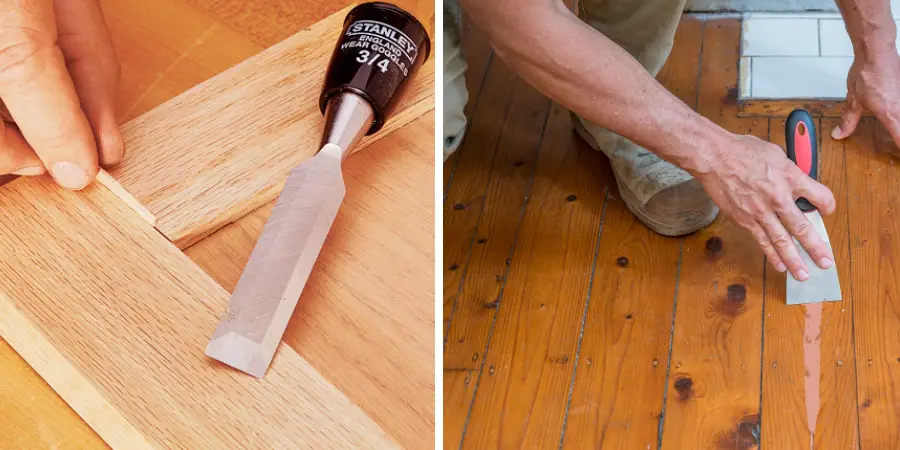
Don’t worry! We have the perfect guide filled with tips and tricks on how to fill large gaps in wood quickly and easily. Keep reading to find out all of the methods available, along with their pros and cons, so you can select the option that will yield superior results each time!
What Causes Large Gaps in Wood?
Large gaps in wood can be caused by a variety of factors, such as age, environmental changes (such as seasonal humidity and temperature levels), or improper construction. Age is typically the most common cause, as wood expands and contracts with changes in temperature and moisture over time. This process causes the seams between pieces of wood to widen and form large gaps. Improper construction can also cause large gaps in the wood, such as when two pieces of wood do not fit together correctly or when the joint is not properly secured.
Required Materials for Filling Large Gaps in Wood
Depending on the type of filler used, the following materials may be necessary:
- Wood glue
- Wood putty or paste
- Chisel
- Sandpaper
- Paintbrush
10 Tips on How to Fill Large Gaps in Wood
There are several methods to fill large gaps in the wood, each with its own advantages and disadvantages. The best method for you will depend on the size of the gap, the type of wood, and your budget.
1. Wood Filler
This is one of the most popular methods for filling large gaps in the wood and is often used by professionals as well as DIYers. The main advantage of using a wood filler is that it can be easily sanded and painted over. It is also relatively inexpensive and available in a variety of colors to match the wood you are using.
2. Wood Glue
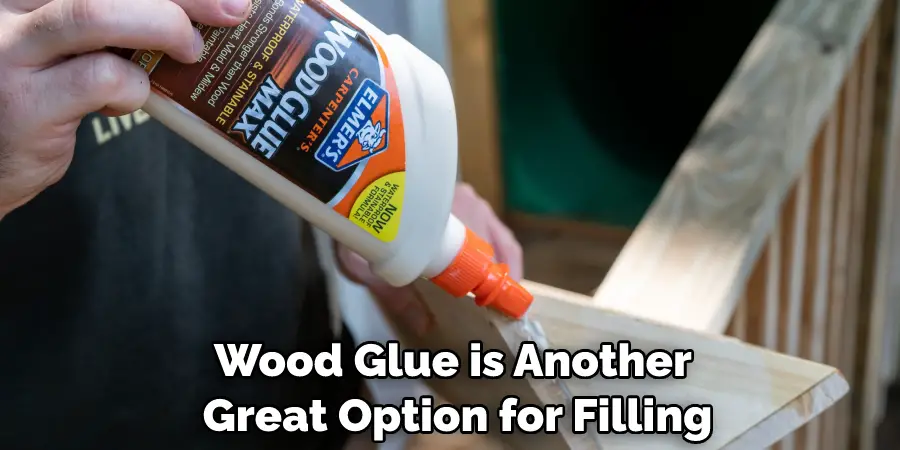
Wood glue is another great option for filling large gaps in the wood, as it can be used to bond two pieces of wood together tight enough that the gap disappears. The downside is that it is difficult to sand down and paint over, so it may be best used for projects where the wood will remain unfinished.
3. Wood Putty or Paste
Wood putty or paste is similar to wood filler in that it can easily be sanded and painted over, but it also has the added advantage of being able to bond two pieces of wood together. It is not as strong as wood glue, but it can still provide a good seal for larger gaps.
4. Chisel
Chiseling can be used to fill large gaps in wood by cutting away the excess material around the gap and then filling it with epoxy or other filler materials. This method does require a bit of skill with a chisel, so it may be best to use this method only if you have experience using them.
5. Sandpaper
Using sandpaper is another great way to fill large gaps in the wood. By simply sanding the area around the gap, the edges can be smoothed out and made flush with the surrounding area. This method is also great for filling small cracks or imperfections in the wood, making it a versatile option for any project.
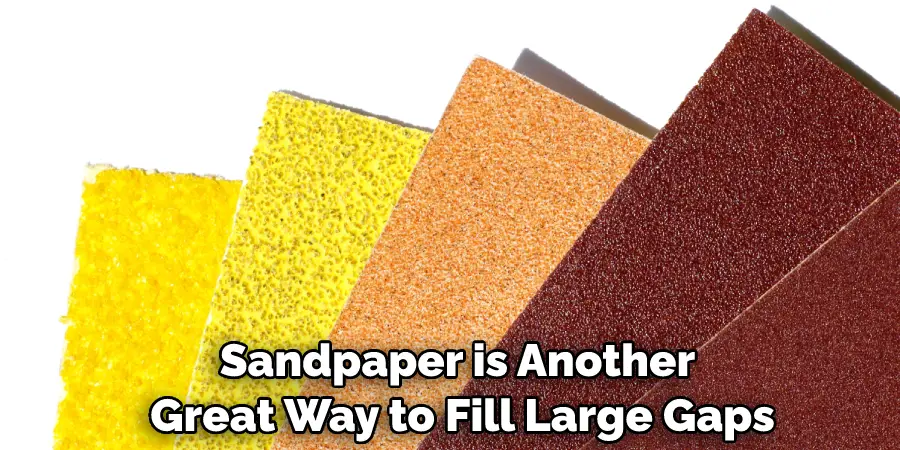
6. Wax
Wax is another great option for filling large gaps in the wood, as it can be applied directly to the gap and then sanded down to create a smooth finish. Wax will also help protect the wood from moisture and wear over time.
7. Epoxy Resin
Epoxy resin is often used to fill large gaps in the wood, as it is strong and durable enough to bond two pieces of wood together. The downside is that it can be difficult to sand, and the surface may need to be repainted if the epoxy is visible.
8. Dowels
Dowels are another great option for filling large gaps in the wood, as they provide a secure fit and can easily be sanded down. This method works best on smaller gaps, so it may not be the best option for larger gaps in the wood.
9. Biscuits
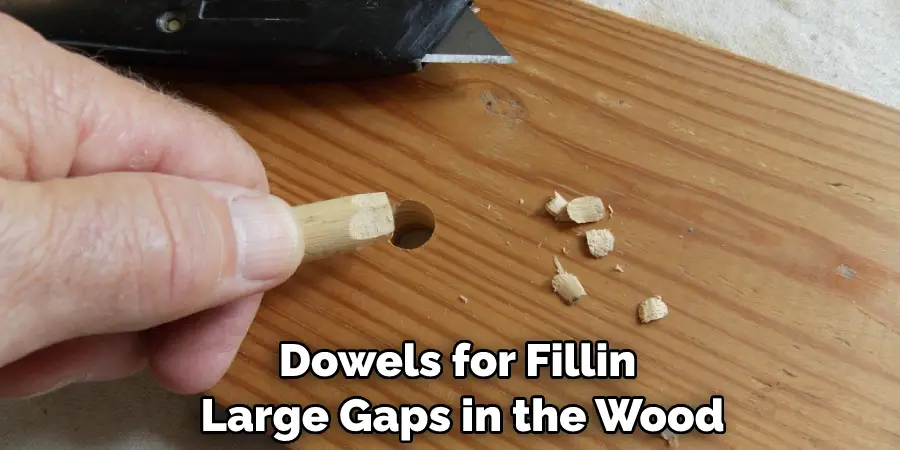
10. Rubber or Plastic Strips
Biscuits are small wooden plugs that are inserted into a joint to help keep two pieces of wood together. They are often used as an alternative to dowels for filling large gaps in the wood, as they provide a much stronger bond than dowels.
Rubber or plastic strips can be used to fill large gaps in wood by simply pressing them into the gap and then sanding them to create a smooth finish. They are also very durable and long-lasting, making them a great option for projects that require a lot of wear and tear.
Filling large gaps in wood can be a tricky task, but with the right materials and know-how, it is possible to get the job done quickly and effectively. Whether you choose to use wood filler, glue, putty or paste, chiseling, sandpaper, wax, epoxy resin, dowels, biscuits, or rubber/plastic strips, you should be able to find the right material and method for your project. With proper preparation on how to fill large gaps in wood and a bit of patience, you can easily fill large gaps in the wood and bring new life to your furniture or other wooden items.
8 Tips to Make the Repair Long Lasting
1. Make sure to use the right materials for the job. Different types of wood require different filling methods and materials, so it is important to select the materials that are best suited for your project.
2. Prepare the area around the gap by sanding down any rough edges or imperfections. This will help create a smooth surface and ensure that the repair lasts longer. Sanding also helps the filler material bond with the wood better.
3. Use high-quality wood glue when filling large gaps in hardwoods, as this will help ensure that the repair is strong and long-lasting. When using wood glue, clamp the two pieces of wood together tightly in order to ensure a strong bond.
4. When using epoxy resin to fill large gaps in the wood, make sure to use enough of it to completely fill the gap. Use clamps to hold the two pieces of wood together as the epoxy sets, and be sure to wear protective gloves while working with it. Be sure to use enough epoxy resin or other adhesive so that it completely fills the gap.
5. When filling large gaps in wood with putty or paste, make sure that the mixture is thoroughly mixed in order to ensure a strong bond. It may also be necessary to clamp the two pieces of wood together while the mixture sets.
6. For dowels, biscuits, or rubber/plastic strips, make sure that they are firmly inserted into the gap before sanding down to create a flush surface. This will help ensure that the repair is secure and long-lasting.
7. When using wax to fill large gaps in the wood, make sure to use high-quality wax with a long-lasting finish. For best results, use multiple coats of wax and let each coat dry before applying the next one.
8. Once the repair is complete, make sure to seal the wood with a protective coating or sealer in order to protect it from moisture and everyday wear and tear. This will help ensure that the repair remains strong and long-lasting.
By following these tips, you can ensure that your repair is strong and long-lasting. With a bit of patience, skill, and the right materials, it is possible to fill large gaps in wood with ease. So, the next time you need to fill large gaps in the wood, remember these tips on how to fill large gaps in wood and get the job done quickly and effectively!
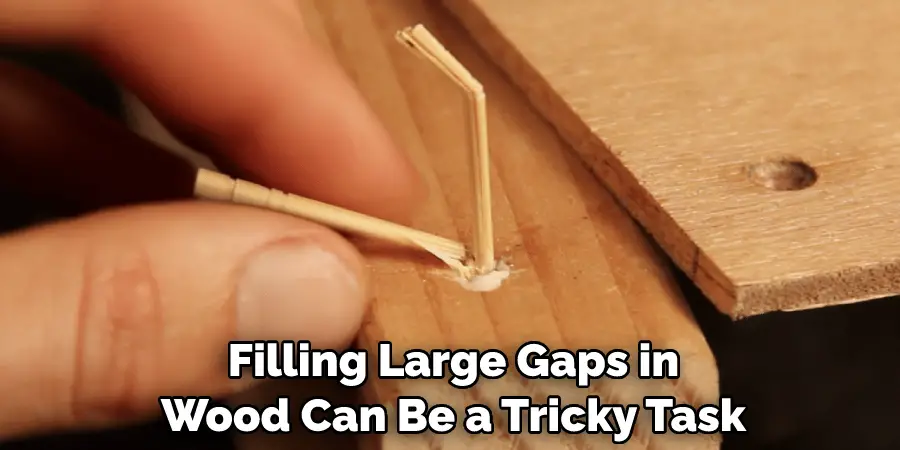
7 Tips to Prevent Gaps in Wood
1. Use high-quality wood for outdoor projects, as it is less likely to get damaged by moisture or wear and tear over time. The quality of the wood will determine how well your project withstands time and weather.
2. Take time to sand the wood before you begin filling gaps in it, as this will help ensure a smooth surface to work with. Sanding will also remove any dirt, dust, or other debris that can cause problems later on.
3. Choose the right kind of filling material for the job. Wood filler, putty, and caulk are all viable options, depending on the size and location of the gap you’re repairing.
4. Clean out the gap before applying your chosen filling material. Use a damp cloth to remove any dirt or dust particles that might be lodged in there, as they can cause problems later on.
5. Use a putty knife or similar tool to apply the filling material, as this will help create an even surface for the filler to adhere to. The tools should be cleaned between uses to avoid cross-contamination.
6. Allow the filler to dry completely before sanding it down, as this will ensure a smooth and even finish. The sanding process should be done with fine-grit sandpaper to ensure a smooth, even surface.
7. Use a high-quality paint or stain to seal the gap and protect it from further damage. This will help keep your project looking its best for years to come. The paint or stain should be applied in several thin layers to ensure an even finish.
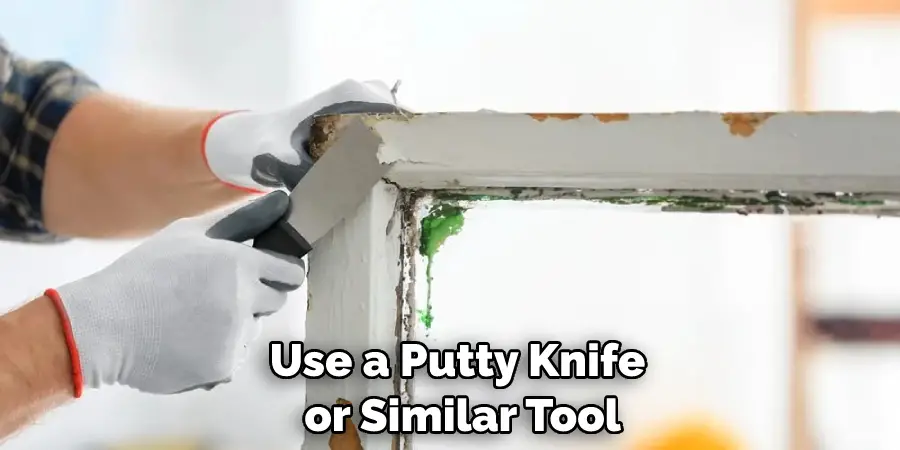
Following these tips will help you successfully fill large gaps in the wood and guarantee a professional-looking result. With some patience and care, your project can look like it was done by a pro! Now you know how to fill large gaps in wood with ease.
Frequently Asked Question
What is the Best Wood Filler?
The best wood filler for filling large gaps in wood is a high-quality latex wood filler. It has superior adhesion and flexibility, making it ideal for filling larger spots and cracks in wood surfaces. You can also use a two-part epoxy wood filler, which is slightly more expensive than latex wood filler but offers superior strength and durability.
Can Gap Filler be Used on Hardwood?
Yes, gap fillers can be used on hardwood floors if applied properly. It is important to choose a filler that is compatible with the type of hardwood you have, as some formulations may damage or discolor the surface. Make sure to read the instructions on the label and test it in an inconspicuous area first.
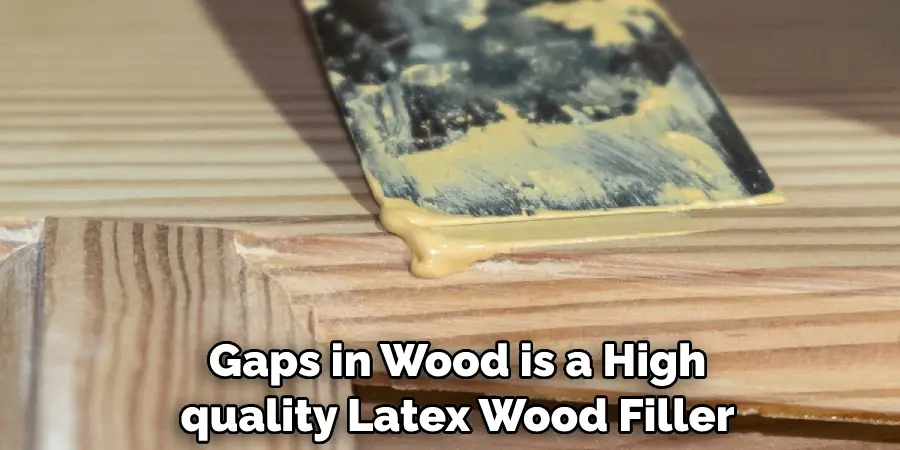
How Do I Prepare Wood for Filling Gaps?
Before filling large gaps in wood, it is important to prepare the surface first. Clean the area thoroughly with a vacuum cleaner and brush or damp cloth. Then use sandpaper or steel wool to smooth out any rough edges. Finally, apply a sealant or primer to ensure that the filler adheres properly.
Conclusion
To fill large gaps in wood, you must understand the underlying cause of the gap’s formation and select the best option for closing it. Depending on your expertise, some options might be better than others. For filling small cracks, you can use either wood putty or a strong adhesive product such as epoxy resin. Dealt with correctly, both are durable and aesthetically appealing.
For deeper gaps that require stability as well as strength, fillers like wood filler and plywood splines may be ideal choices. While they will certainly take more work to complete the job properly, they can last for years with minimal upkeep and will make your project look fantastic.
No matter what technique you choose, remember to do your research so you can make an informed decision in order to get the most out of any repair. These steps on how to fill large gaps in wood would be a great help to for the procedure.
